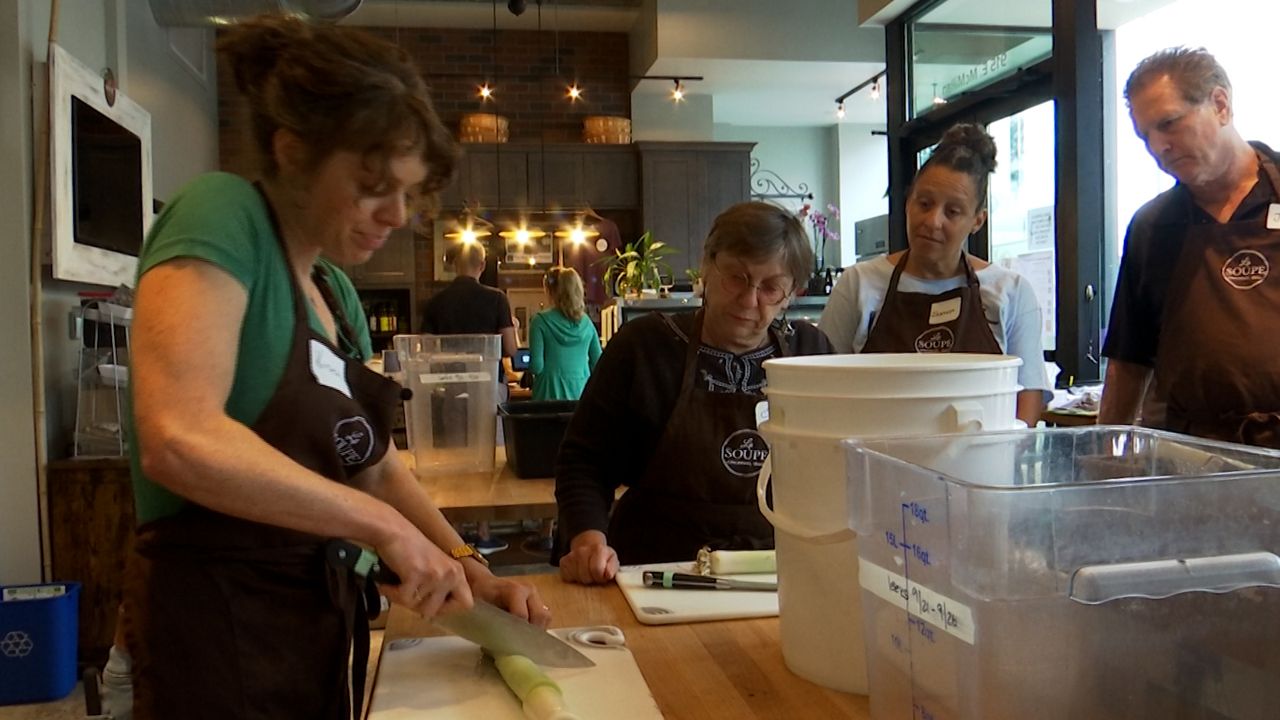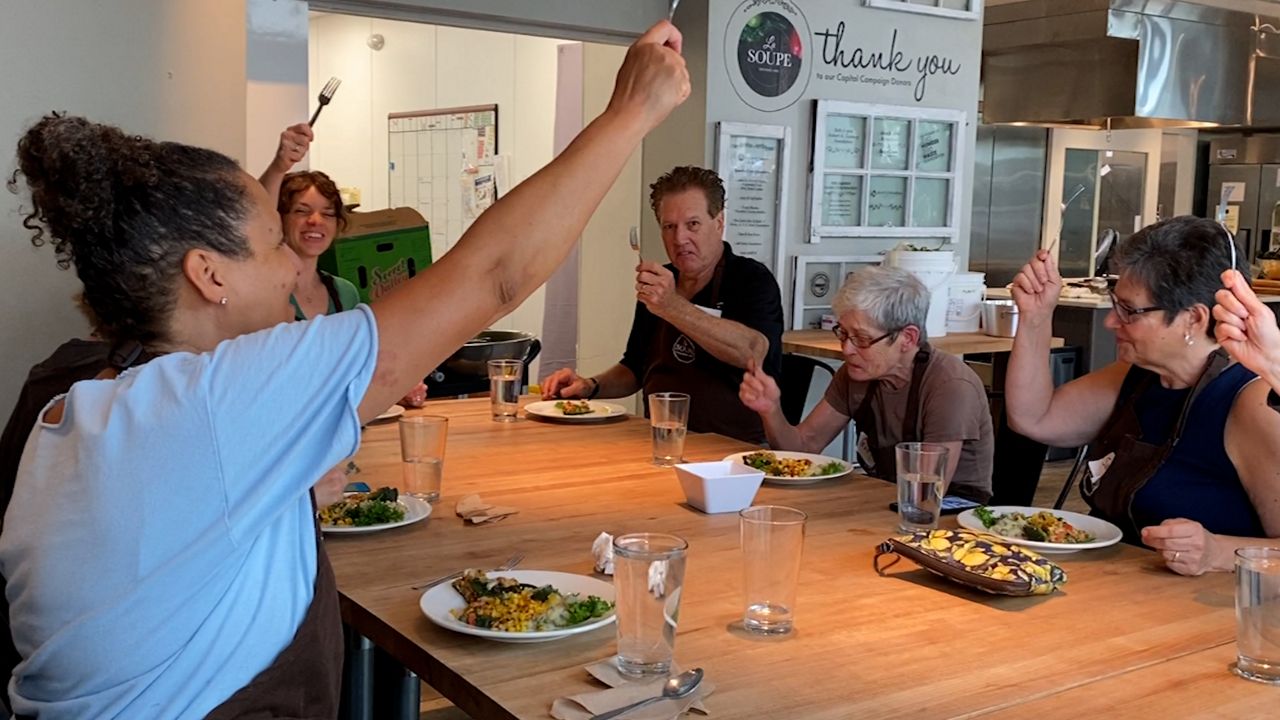CINCINNATI — Kristen St. Clair believes firmly that anyone can cook. All it takes is the right ingredients, the knowledge and materials ready to use them.
The hard part is making sure those meals end up on the table before the ingredients have to go in the trash, wasting food and family dollars. St. Clair said that never has to happen if cooks can master something called “Cooking Improv.”

“This is the way chefs cook every night,” she said.
It’s also La Soupe’s bread and butter. The food rescue nonprofit has earned national acclaim for its efforts to turn food that might otherwise go to waste into free meals for people in need.
“We’re using items we rescued, items that need to be eaten right away typically and we’re figuring out what delicious foods we can create as a community with those items,” St. Clair said.
Every week La Soupe keeps thousands of pounds of food out of landfills, even preserving scraps not meant for human consumption to feed to pigs and wolves, though their mission and the issue doesn’t stop there.
The USDA estimates the average U.S. Family throws out 250 pounds of rotting produce, stale bread and other expired foods every year. As La Soupe’s education director, St. Clair is focused on helping Cincinnati families adopt prevention practices.
“We can teach about how to create less waste and save money which is really important as we move forward with our culture in cooking,” she said.
After a brief pause through the pandemic, in the summer of 2021, La Soupe launched its first “Cooking Improv” classes, designed to help locals think the way La Soupe chefs do. St. Clair teaches the class always opening with a brainstorming session about the ingredients they will work with that day.
On Tuesday, it was poblano peppers and leeks. The class didn’t find out until they saw them on the counter.

“Sometimes it’s very unusual ingredients and sometimes very common,” St. Clair said.
St. Clair then offers a knife skills tutorial to help students get to know the ingredients a little better.
“If you’ve never seen it, you wouldn’t know how to chop it. You wouldn’t know how to eat it,” she said.
Then, finally the class gets cooking. St. Clair will show them other ingredients that go well with their selected vegetables, supplies spices and lets them work independently for the final 45 minutes.
“The creativity comes out and I love the conversations with everyone saying, ‘Oh how to do we want this to taste in the end? What do we want the texture to be like?' Thinking about every little bit,” she said.

The classes are free and open to students of all skill levels. St. Clair said she will pair more experienced home cooks with those that have more to learn and by the end of the class, she’s always satisfied with what the students cook up.
“If you’ve eaten good food you know there’s a way that you can produce it. You just need some helping tips along the way,” she said.
St. Clair ends the classes eating with her students, debriefing on what they learned, and talking about ways they might improve their meals if they got the chance.
With a better understanding of the ingredients, how to prepare them, and how they pair with other foods, St. Clair said her students can easily bring those lessons home. Maybe they will buy produce they wouldn’t normally or cook with more confidence.
Most importantly though, St. Clair hopes these cooks understand they don’t need to find a recipe to cook up whatever they have in their fridge.
“With sidekicks in the kitchen you can really do anything you want,” she said.




